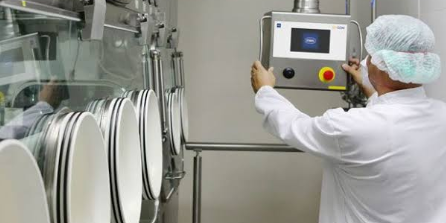Article wants to discuss Pharmaceutical Bio Hazards Bio-safety Risk Assessment Laboratory Risk Management. In recent years the pharmaceutical industry has come to occupy a unique position in regard to problems of industrial hygiene and toxicology; practically no other single commercial enterprise presents such a wide variety of potentially toxic exposures or such a rapidly-changing advent of new chemical substances. The hazards of extracting active principles from crude drugs are unequally divided between the three classes of materials involved; the herbs themselves, the solvents, and the finished active material. Of the three, the crude materials offer the least striking dangers to health.
Biohazard Definition
Biohazard[ bahy-oh-haz-erd ] is generally defined as a pathogen, especially one used in or produced by biological research. the health risk posed by the possible release of such a pathogen into the environment.
Pharmaceutical Industrial Hazards
Most hazards encountered fall into three main categories: chemical, biological, or physical. Cleaning agents and disinfectants, drugs, anesthetic gases, solvents, paints, and compressed gases are examples of chemical hazards. Potential exposures to chemical hazards can occur both during use and with poor storage.
Biological hazards include potential exposures to allergens, infectious zoonotics (animal diseases transmissible to humans), and experimental agents such as viral vectors. Allergens, ubiquitous in animal research facilities, are one of the most important health hazards, yet they are frequently overlooked.
Biosafety is also becoming a global concern and requires multilevel resources and international collaboration to monitor, prevent and correct accidents from unintended and malicious release and also to prevent that bioterrorists get their hands-on biologics sample to create biologic weapons of mass destruction. .
Biosafety is the prevention of large-scale loss of biological integrity, focusing both on ecology and human health. These prevention mechanisms include conduction of regular reviews of the biosafety in laboratory settings, as well as strict guidelines to follow. Biosafety is used to protect from harmful incidents. Many laboratories handling biohazards employ an ongoing risk management assessment and enforcement process for biosafety. Failures to follow such protocols can lead to increased risk of exposure to biohazards or pathogens. Human error and poor technique contribute to unnecessary exposure and compromise the best safeguards set into place for protection.
Risk Assessment ??? Who will do this????
—-Safety/Pharmacovigilance team
— Identification of adverse events and evaluation of safety signals
— Safety reports for Health Authorities and Top Management
— Pharmacologists/Toxicologists
— Investigators/Physicians treating patients
— Drug Safety Monitoring Board (DSMB)
— Global interdisciplinary project teams
Risk assessment
Classification of biohazardous materials is subjective and the risk assessment is determined by the individuals most familiar with the specific characteristics of the organism. There are several factors taken into account when assessing an organism and the classification process.
Risk Group 1: (no or low individual and community risk) A microorganism that is unlikely to cause human or animal disease.
Risk Group 2 : (moderate individual risk, low community risk) A pathogen that can cause human or animal disease but is unlikely to be a serious hazard to laboratory workers, the community, livestock or the environment. Laboratory exposures may cause serious infection, but effective treatment and preventive measures are available and the risk of spread of infection is limited.
Risk Group 3 : (high individual risk, low community risk) A pathogen that usually causes serious human or animal disease but does not ordinarily spread from one infected individual to another. Effective treatment and preventive measures are available.
Risk Group 4 : (high individual and community risk) A pathogen that usually causes serious human or animal disease and that can be readily transmitted from one individual to another, directly or indirectly. Effective treatment and preventive measures are not usually available.
It should be apparent from the foregoing that any pharmaceutical industry, large or small, is particularly in need of expert counsel in matters affecting the health of workmen. A thorough knowledge of the literature of known poisons is essential for the industrial specialist in this field, but he must also have an alert readiness to detect and investigate possible new poisons.

